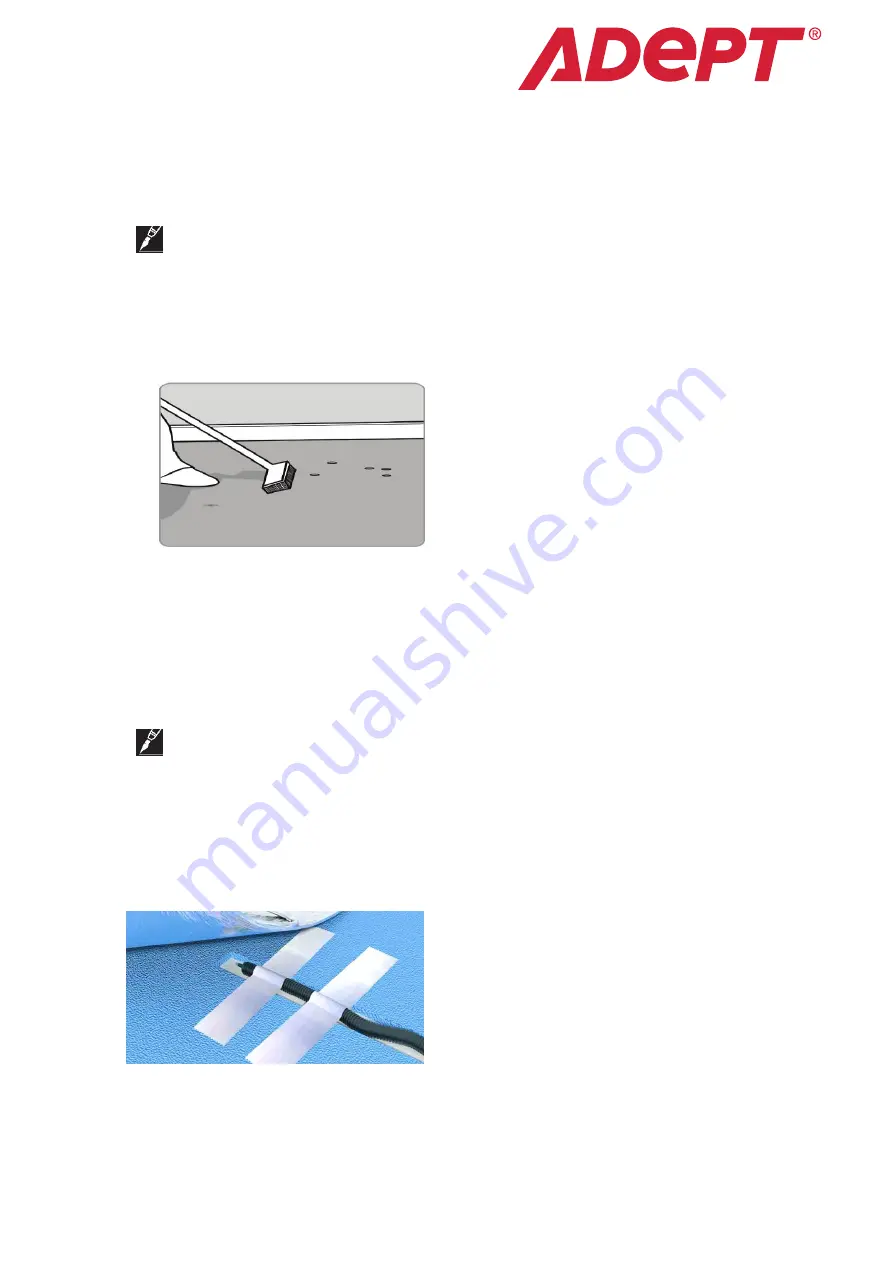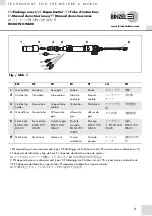
6
Calculate the internal dimensions (skirting board to skirting board) of your room and deduct 2cm
from these. Using these amended dimensions sketch out a diagram of your room and calculate the
total area that you have. Indicate all dimensions required to determine the available floor area and
the position of the Thermostat. We would recommend spending ten minutes sketching this out as it
can save you a lot of time during the installation process if you have a plan.
Important
Adept recommends that the installation is documented with photos to note the location of
connections and the sensor.
Step 2:
PREPARE SUBFLOOR SURFACE
The Foil heater must not be installed in thinset cement, or in direct contact with a cement or
concrete sub-floor. There must always be a soft insulation / underlay beneath the aluminum
heating mat/carefully inspect the subfloor and
make sure it is clean, free of sharp edges,
protruding nails and any other materials that
may damage the heating mat. Clean and
vacuum the floor thoroughly and remove dust
and debris from the floor that may damage the
heating cable. Ensure that the subfloor is
secure and stable. Carefully fill in all cracks.
Step 3:
LAY THE INSULATION BOARD
Use XPS insulation board directly underneath the heating mat/s, install the boards in a brick
pattern below and tape the edges to prevent movement of the underlay during installation.
Step 4: TRANSFER LAYOUT TO FLOOR
Draw an outline of the layout on the room floor including a foot print of all furnishings that are
not yet installed. Unroll the first few feet of the Foil Heating Mat. The starting point of the cable
must be placed within 2.5m from the thermostat.
Important
Mark the position of the connection point between the power lead and the Foil Heating Mat
heating cable. When using a floor temperature sensing thermostat, mark the sensor position in the
middle of heating cables, about 25cm away from the wall (within the heated area), as close as
possible to the thermostat.
Step 5: INSTALL SENSOR
If using a floor temperature sensing thermostat,
install the sensor now, either in conduit tube, or
directly to the subfloor. It is recommended that the
sensor be installed in conduit tube. This will allow
the sensor to be easily replaced in the unlikely
event of failure.
The tube needs to be installed between the
thermostat wall box and the sensor position. The conduit tube must be partially countersunk into
the insulation board.
Run the probe wire down inside the conduit until it just appears from the end
of the conduit. Cut a channel in the floor and wall up to the thermostat for the sensor conduit. The

































